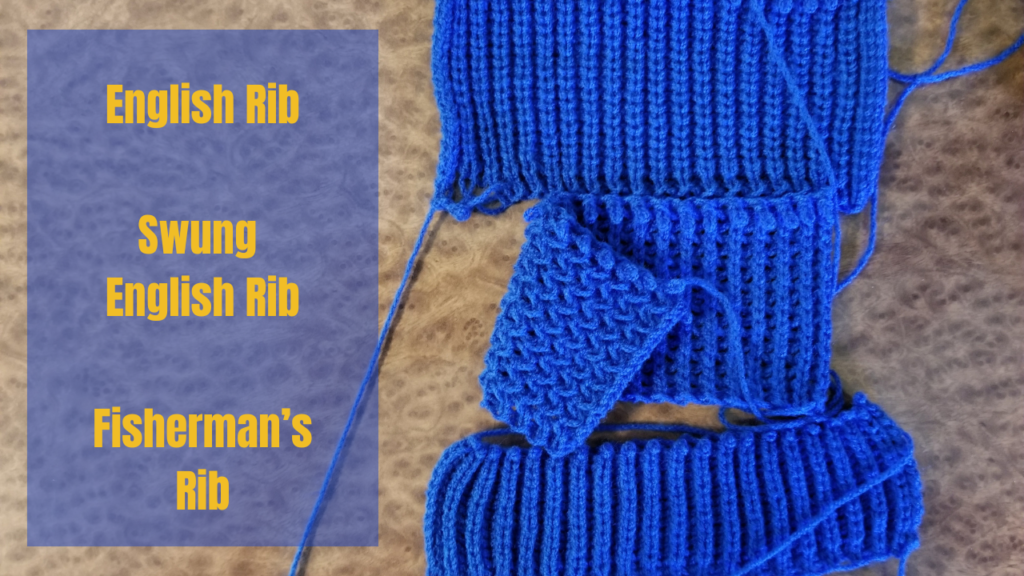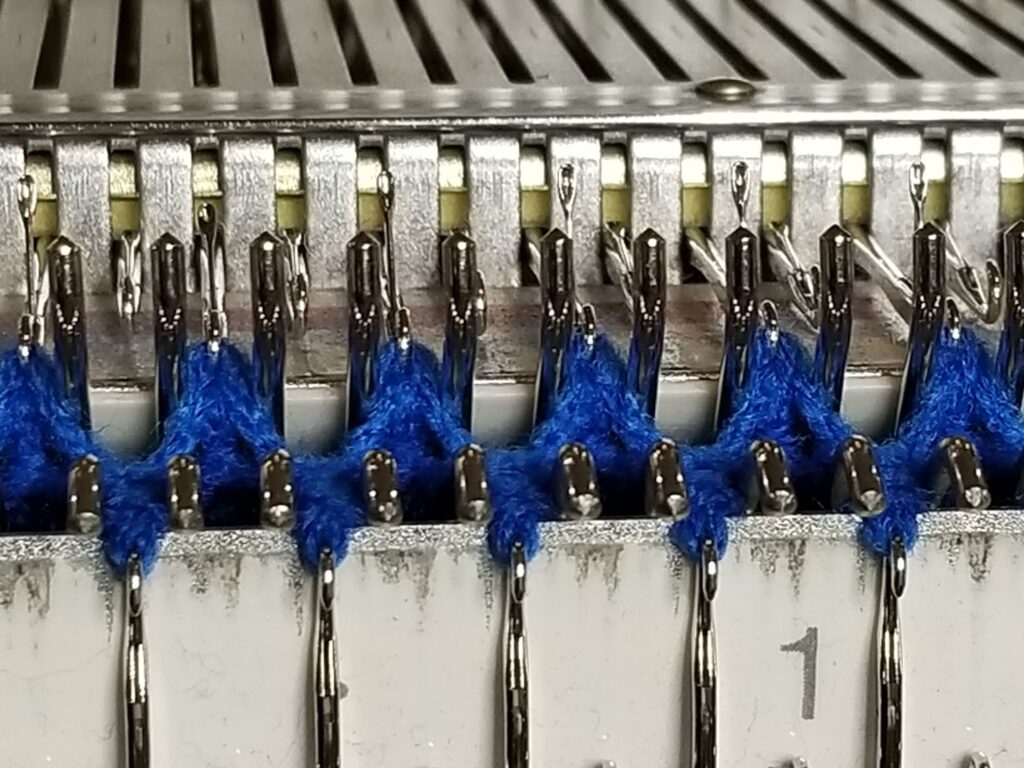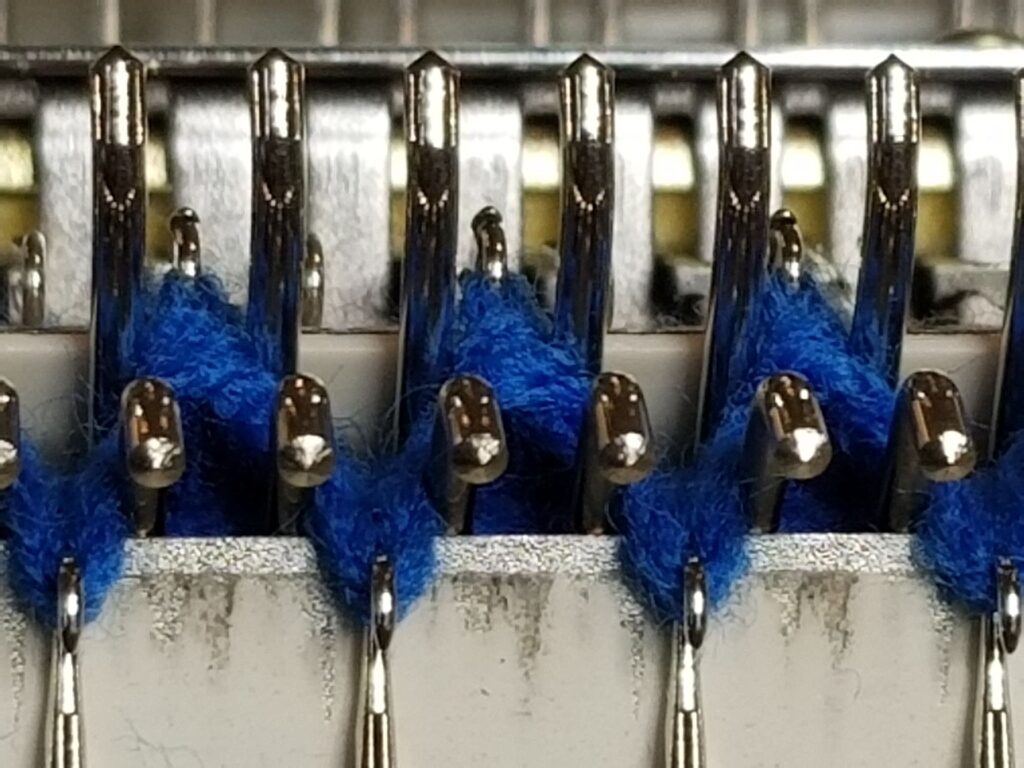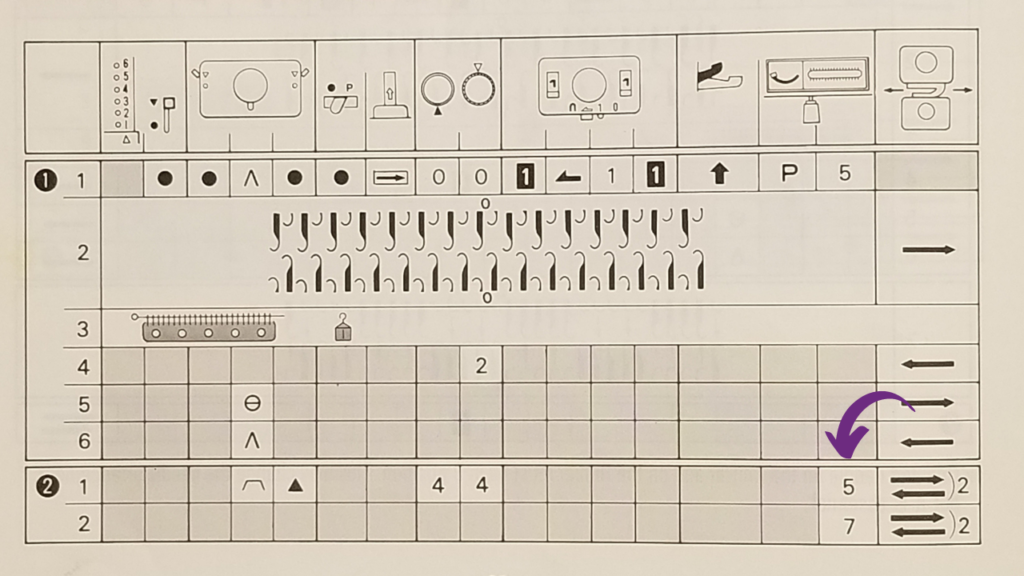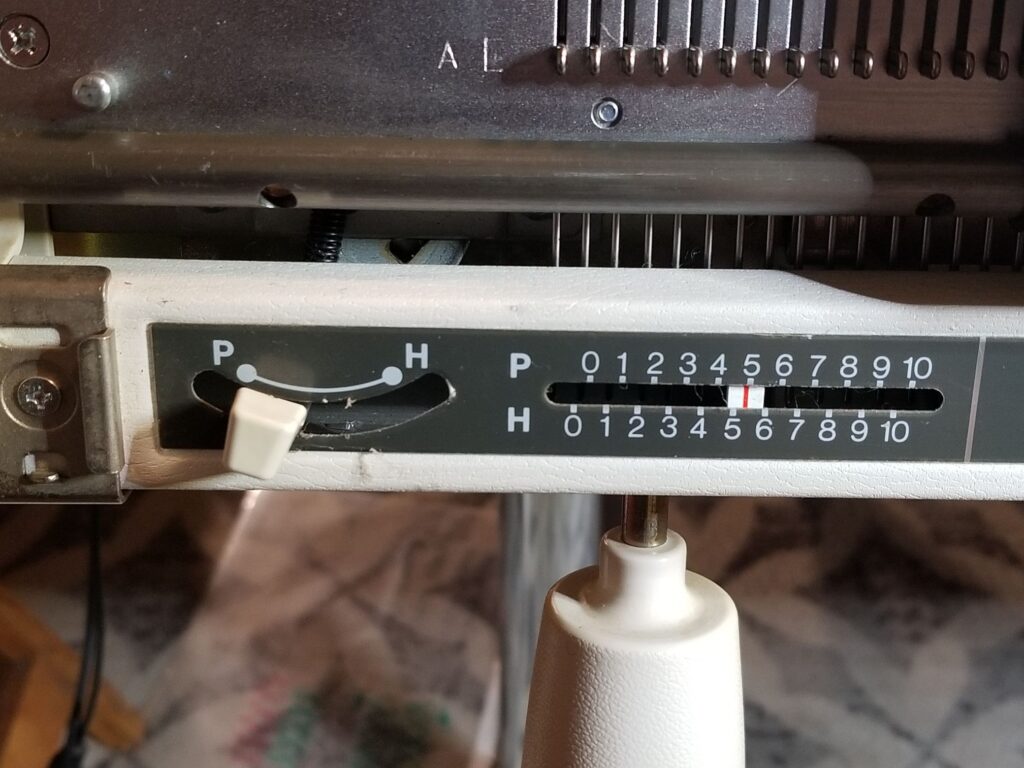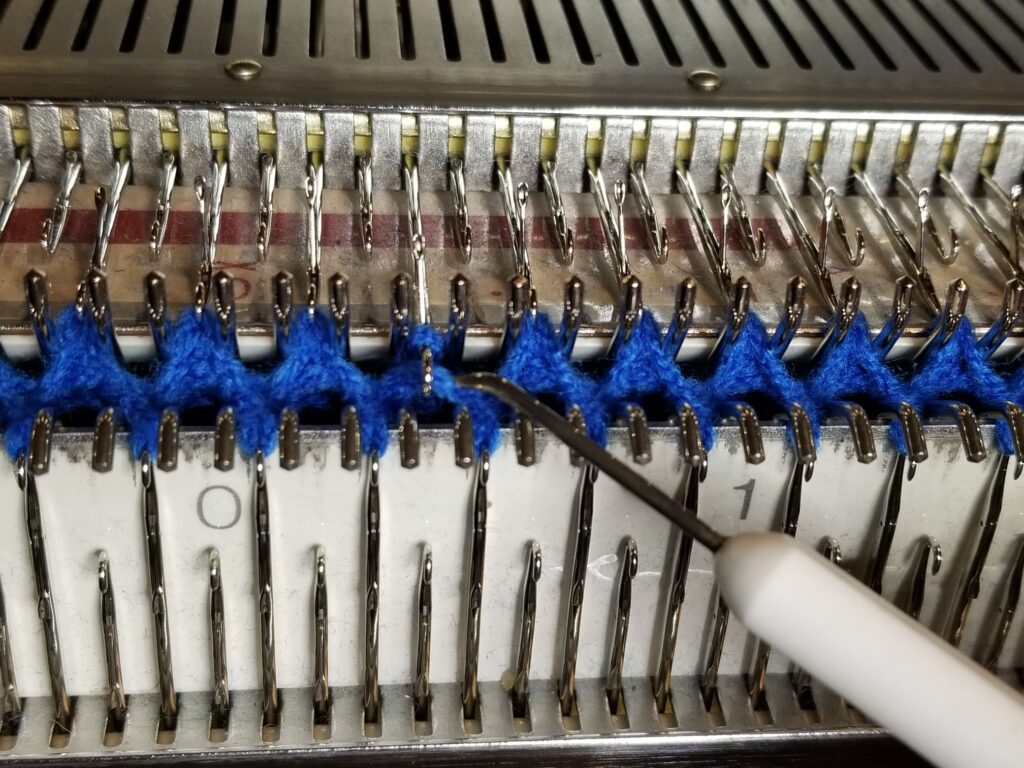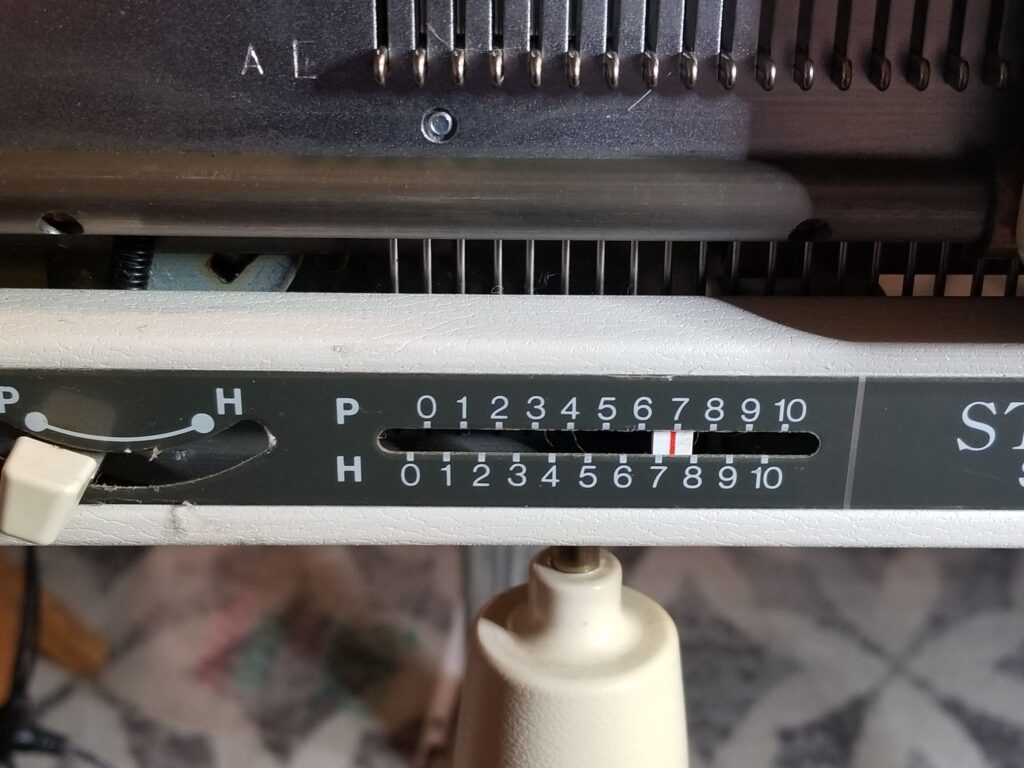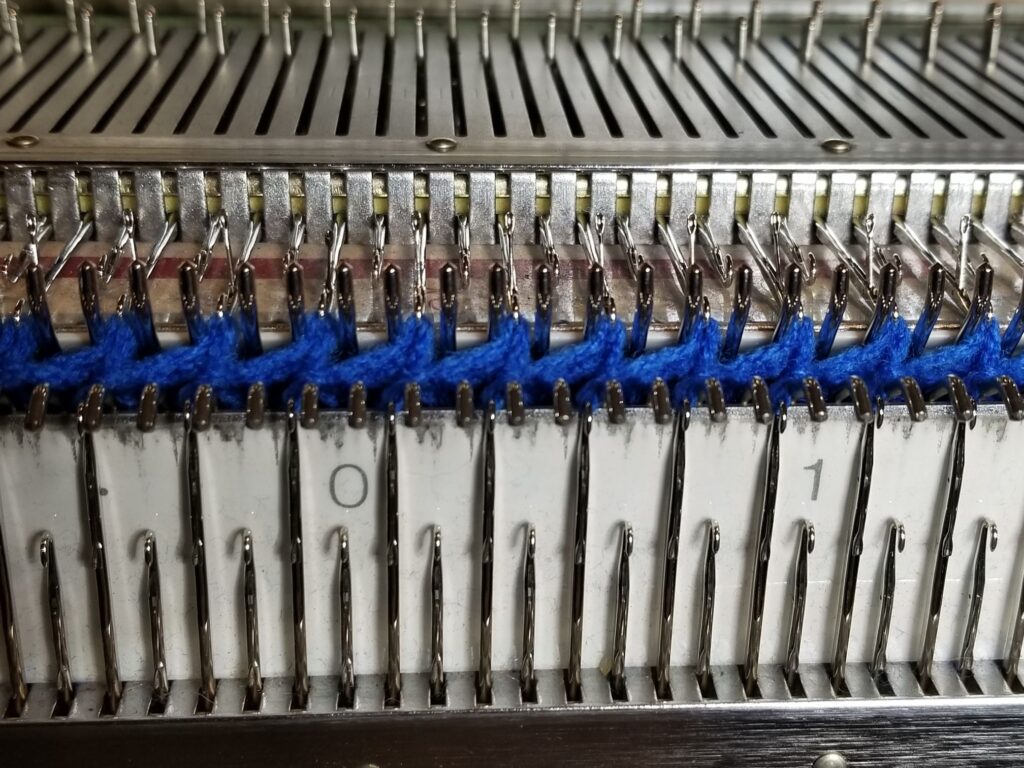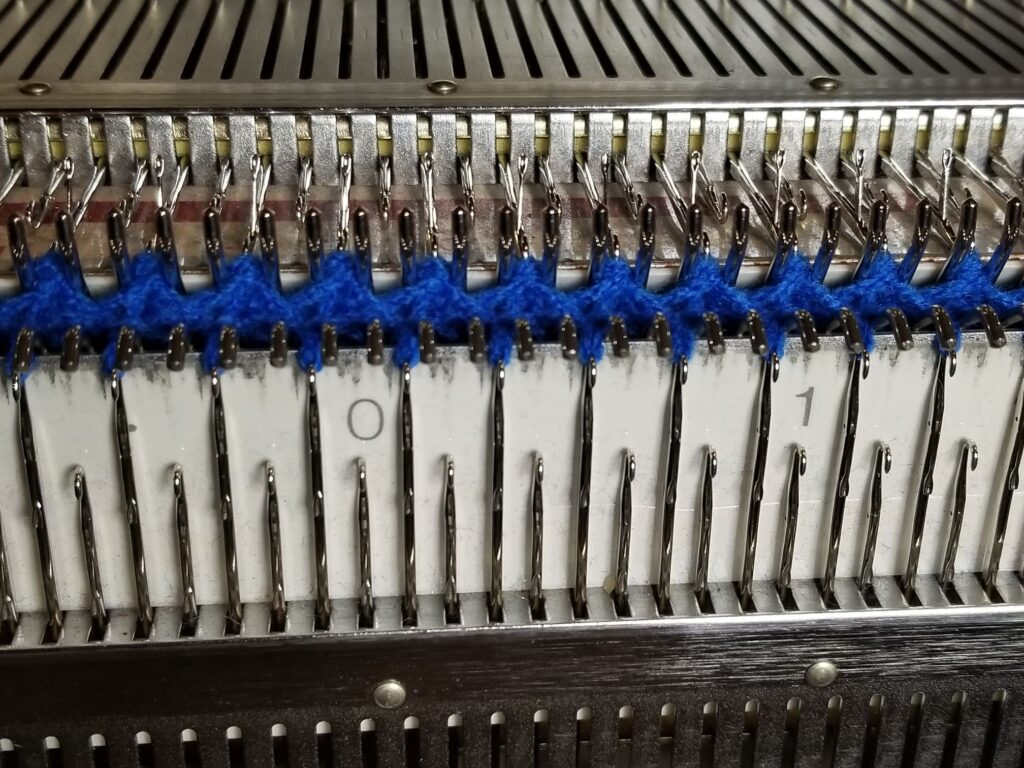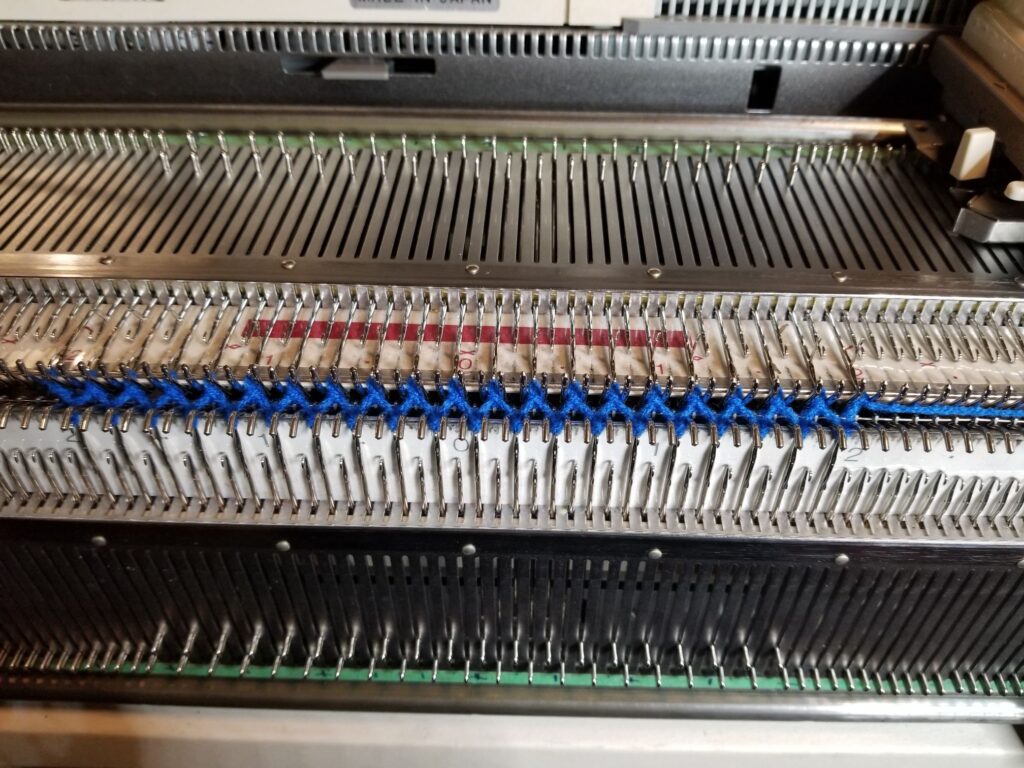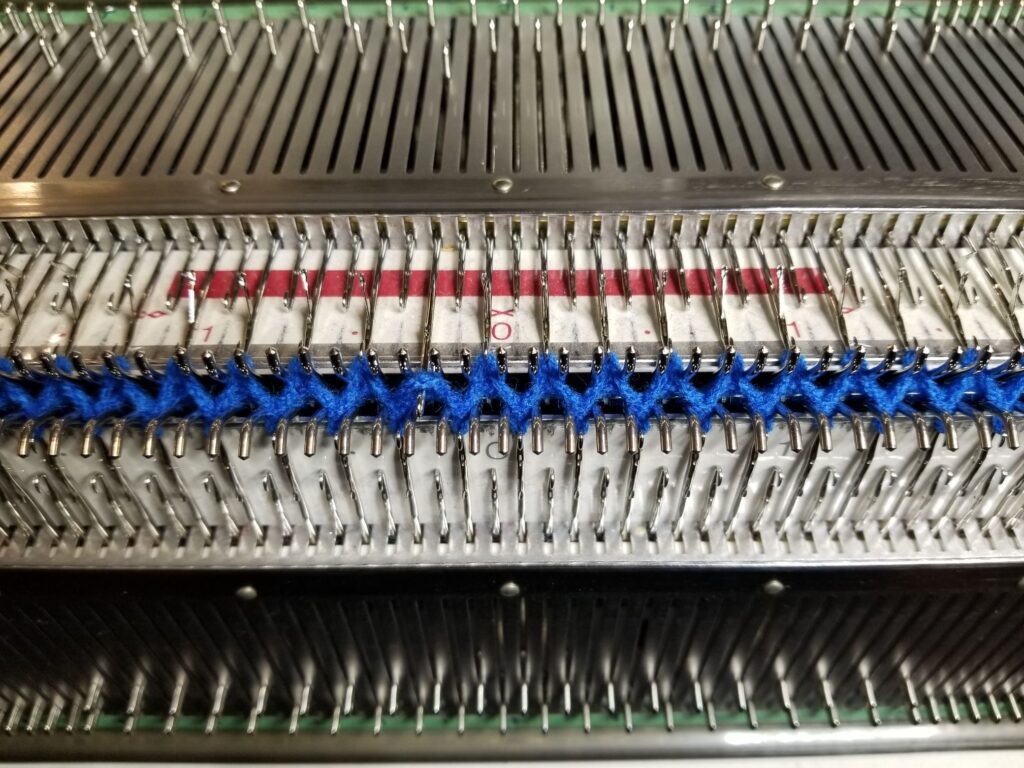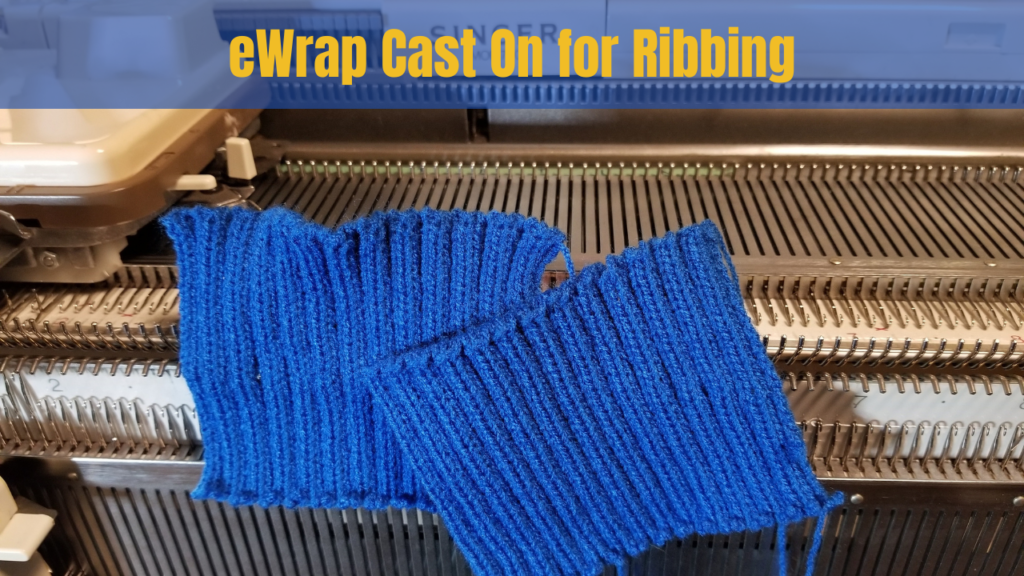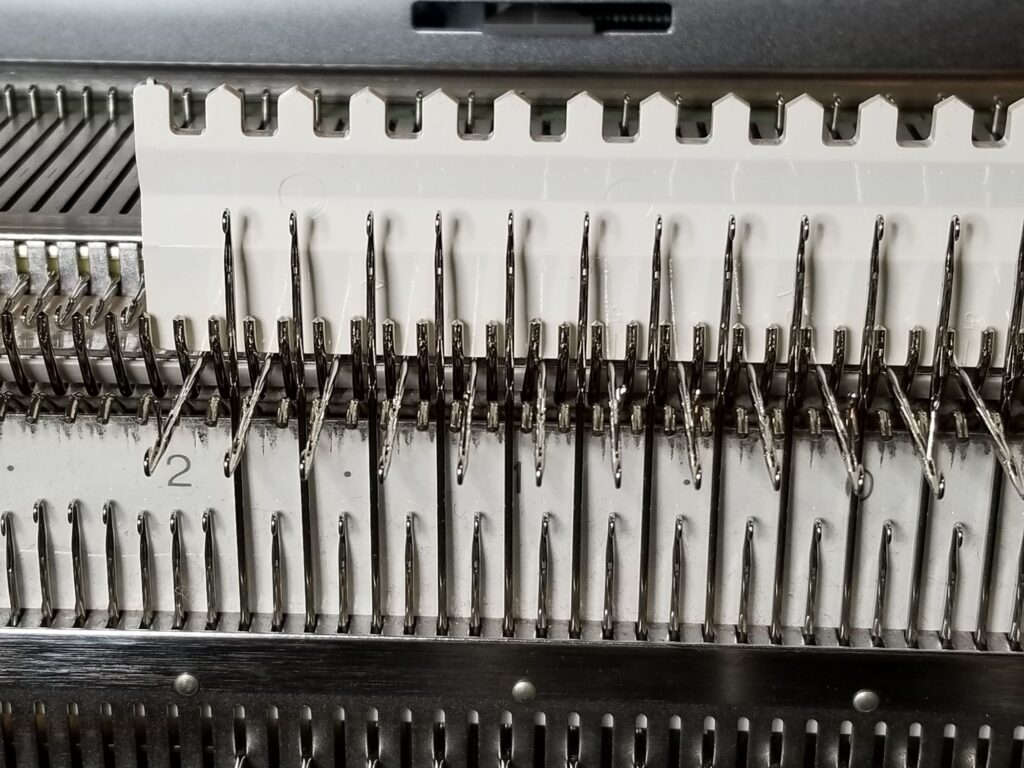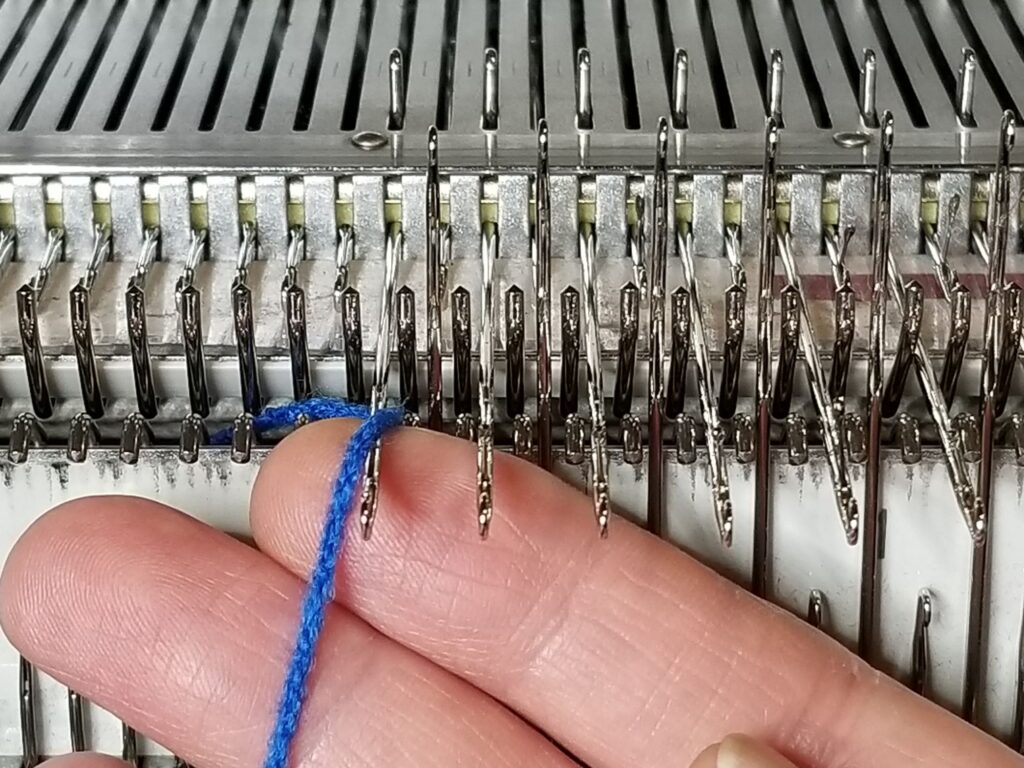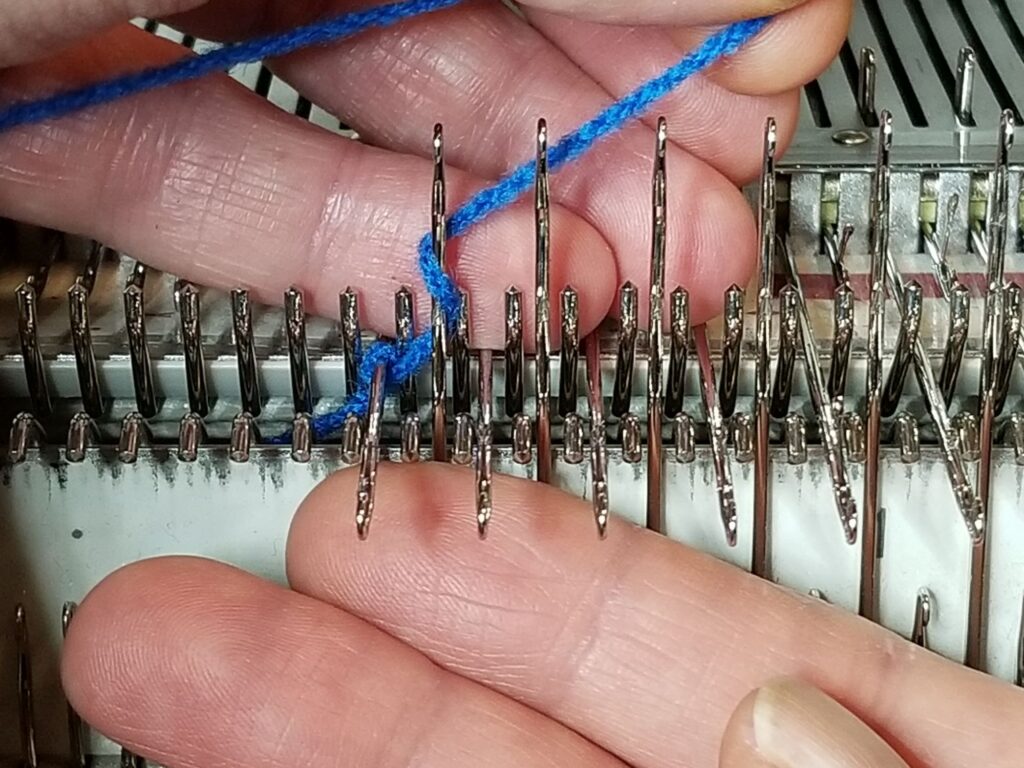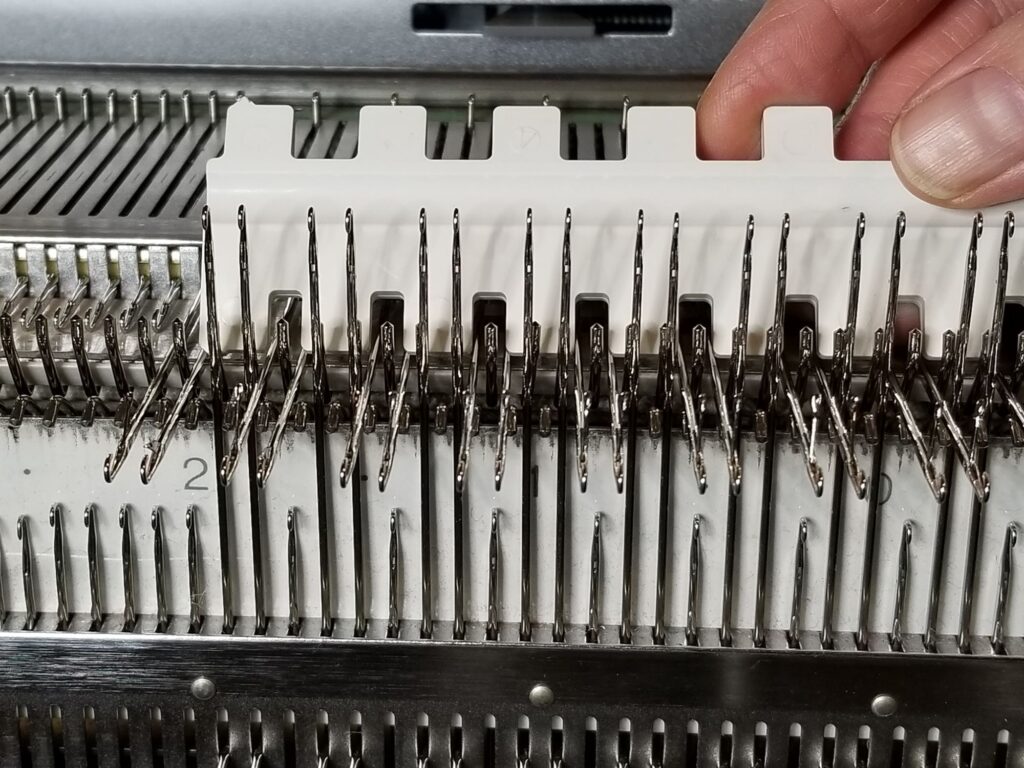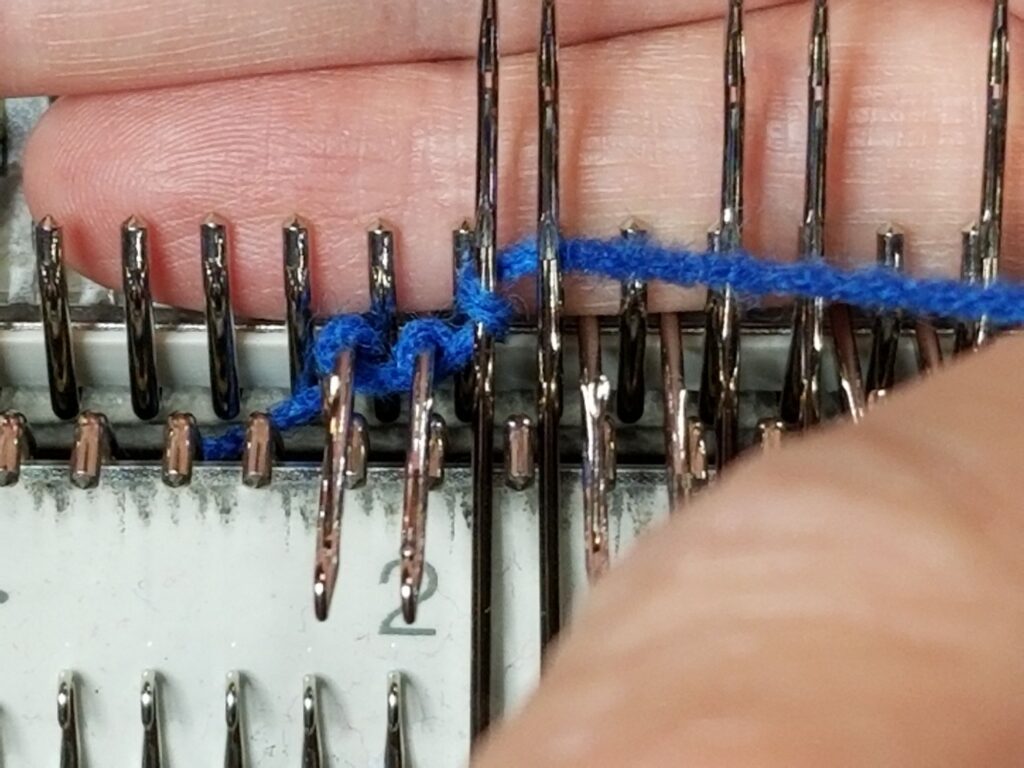to ou
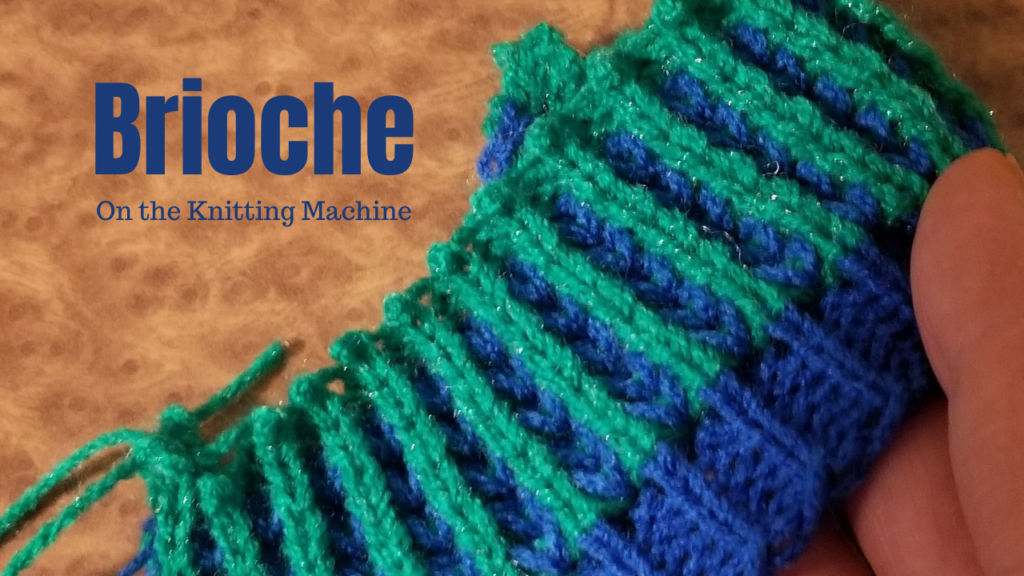
Two color brioche on the knitting machine is basically a two color fisherman’s rib. I will show you how it’s done on the Singer knitting machine.
But it’s important to first think about what you’re asking your machine to do. If you know what the machine is doing or what you want it to do, it won’t matter which brand of machine you’re using. You’ll be able to look in your manual and figure out how to do it.
Consider English Rib
When we knit English Rib, we are asking the machine to tuck on the main bed and knit on the ribber bed for the first pass. Then knit both beds on the second pass.
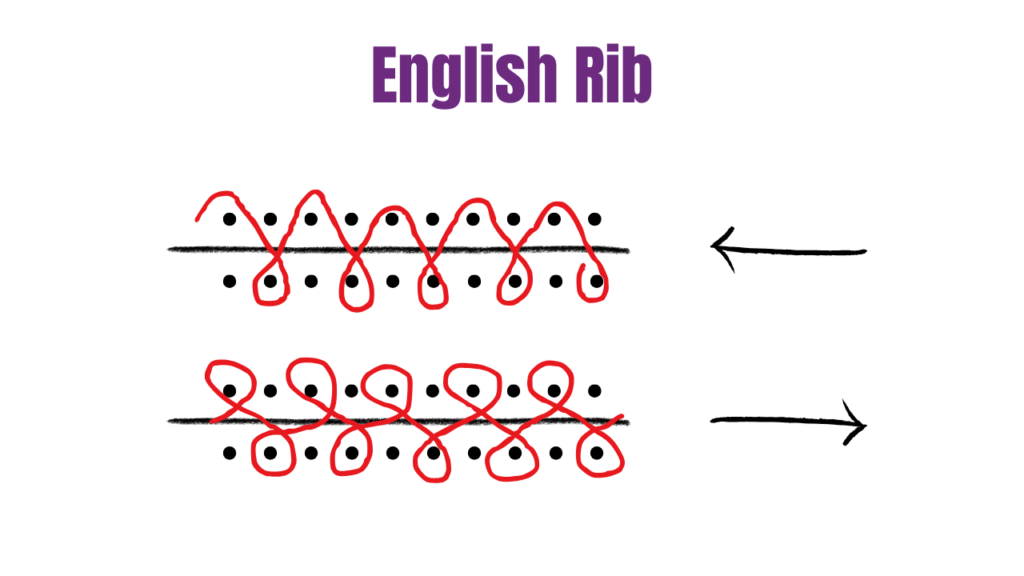 Our operation table looks like this:
Our operation table looks like this:
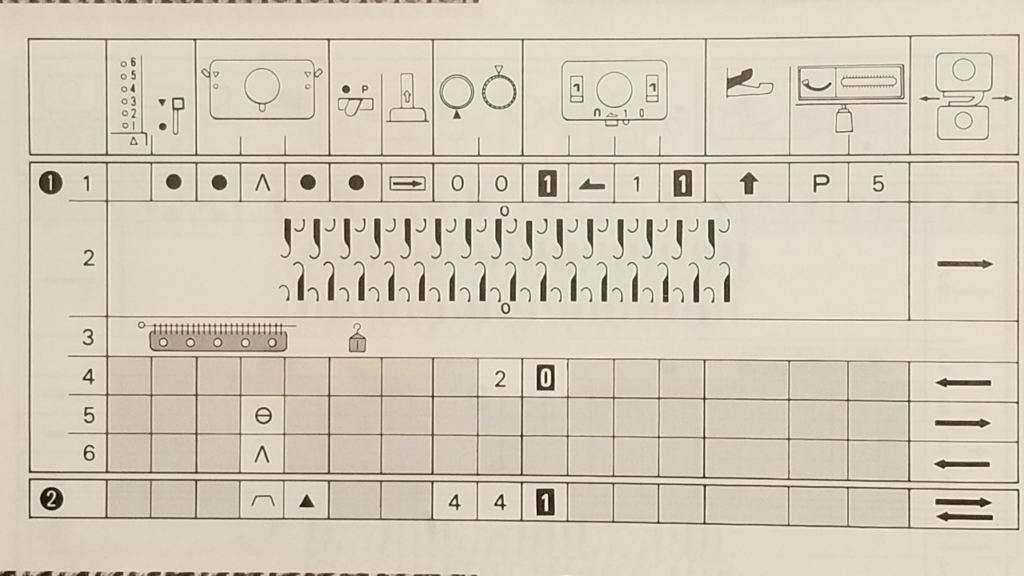
We set the cam lever to tuck, but then set the right side lever to the triangle so the carriage still knits when traveling to the right but tucks when traveling to the left.
For Fisherman’s Rib
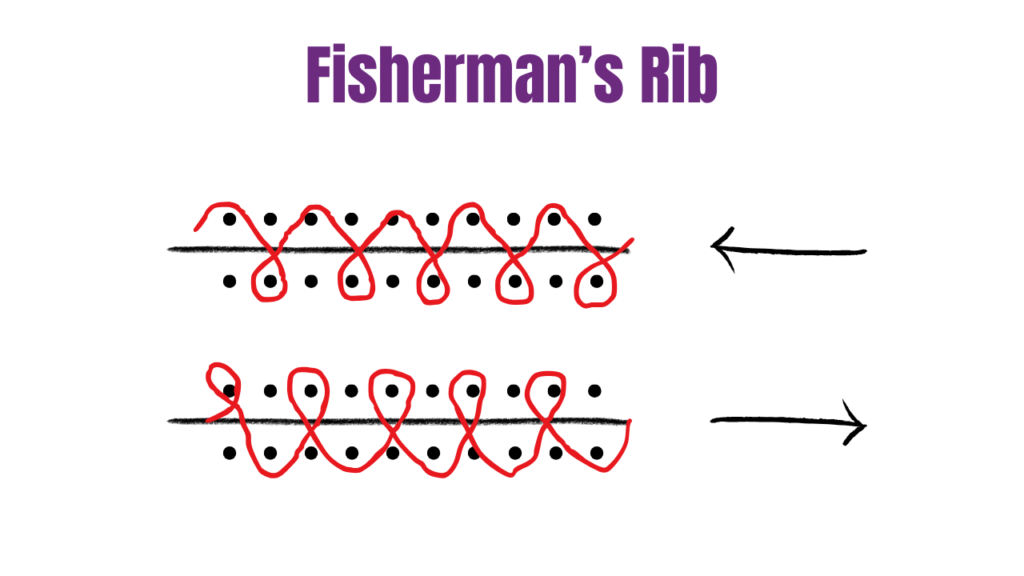

On the right to left pass, we knit the ribber and tuck the main bed. Then on the left to right pass, we tuck the ribber and knit the main bed.
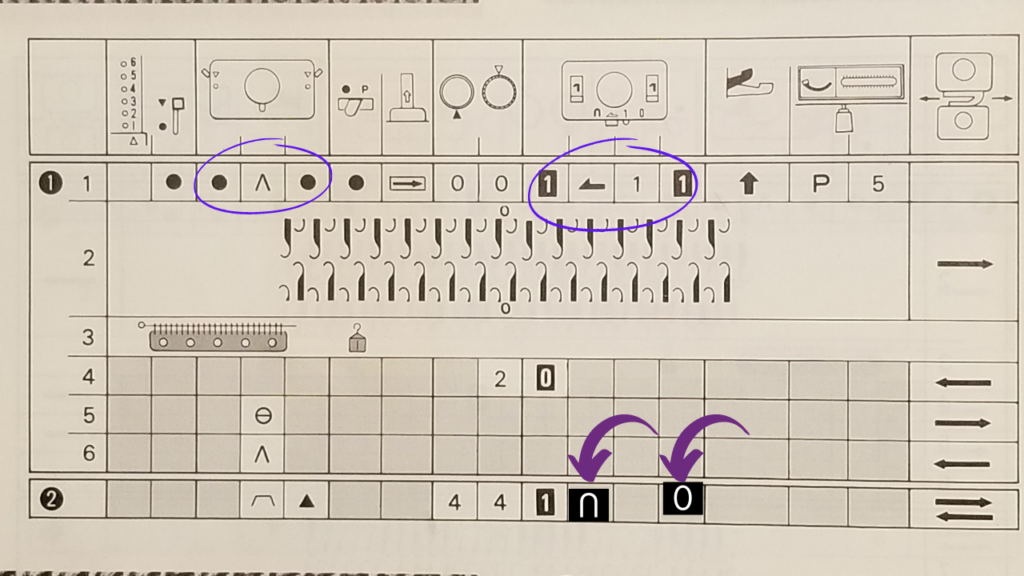


Now our operation table looks like this. We set each carriage to tuck in only one direction. The main carriage in the direction the side lever is set to the circle and on the ribber carriage in the direction the set lever is set to ‘0’.
So now we look at Two Color Brioche
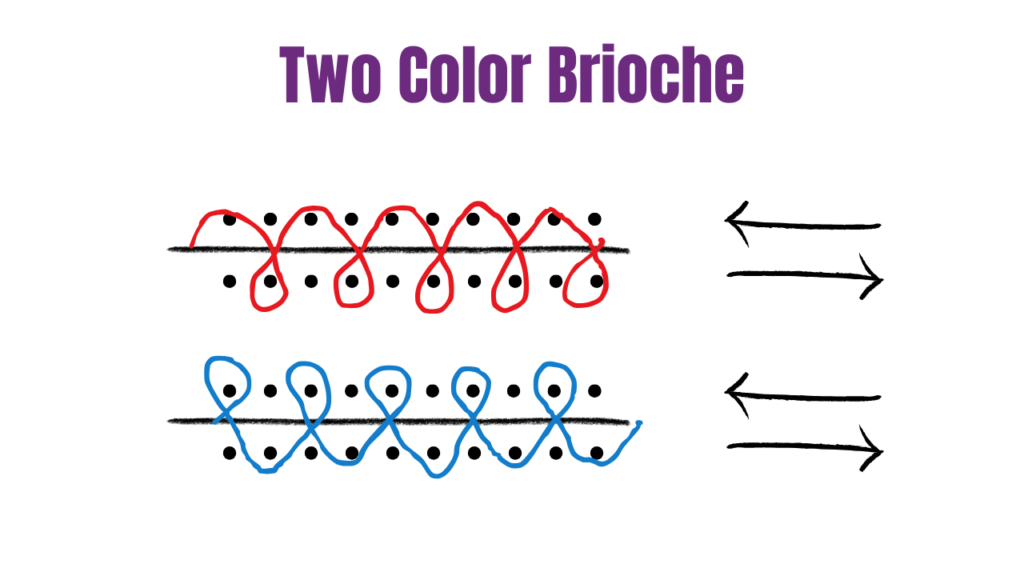

Beginning with the carriage on the left this time and using our first color, we want the carriage to tuck the main bed and knit the ribber – in both directions. Then we want our carriage to knit the contrast color on the main bed and tuck the ribber – again in both directions.
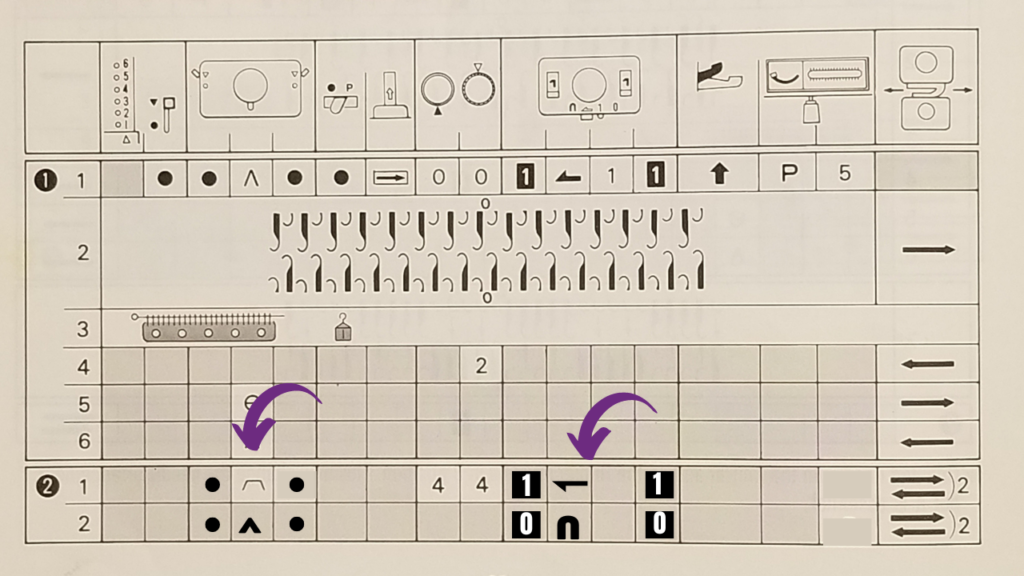

Our operation table if there were one, would look something like this.
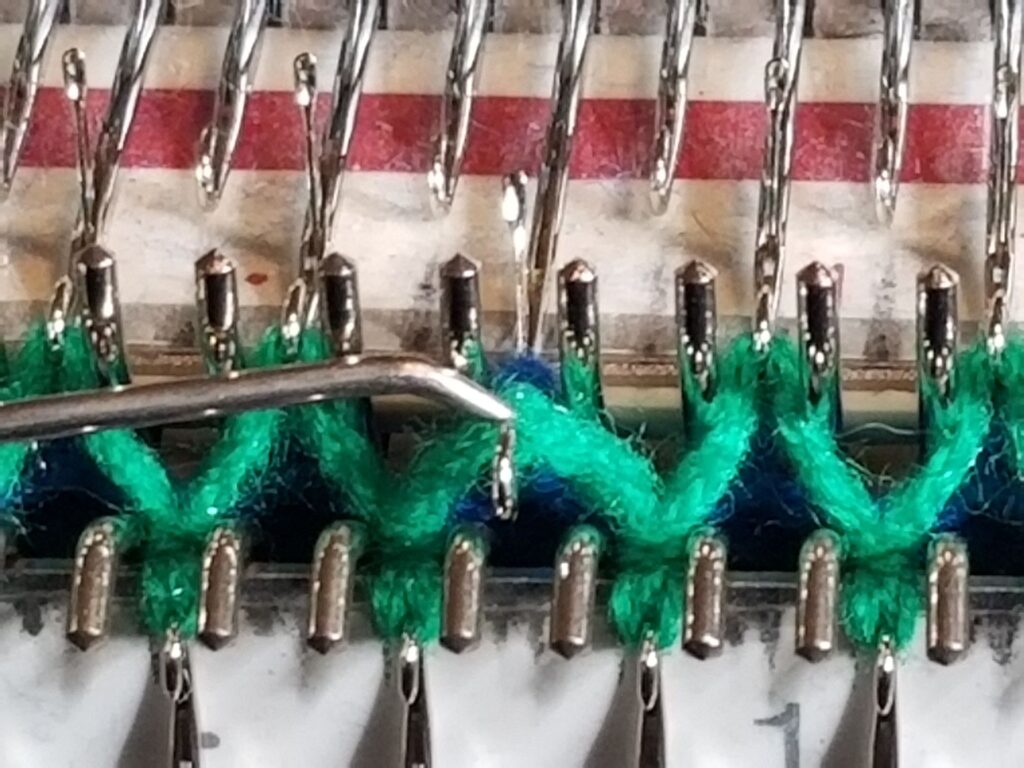

So in our first step we set the knit carriage to tuck, leave the ribber on knit and run the carriage to the right and back again.
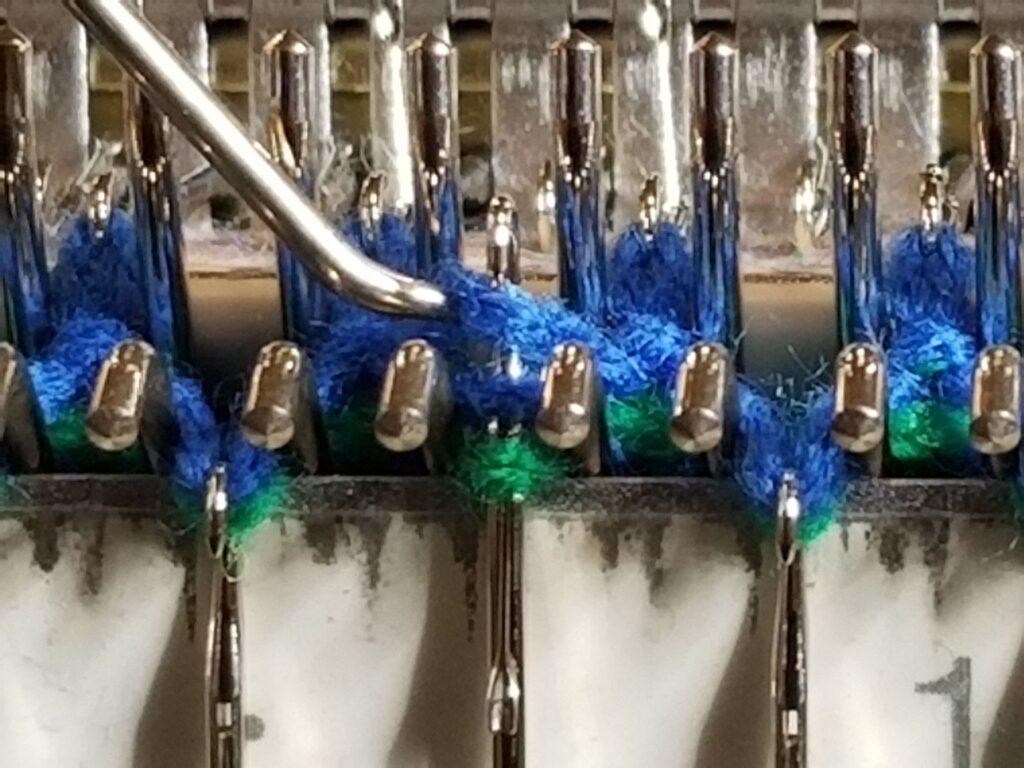

While our carriage is on the left, we change to our second color. With the knit carriage set to stockinette and the ribber to tuck, we knit to the right and back again.
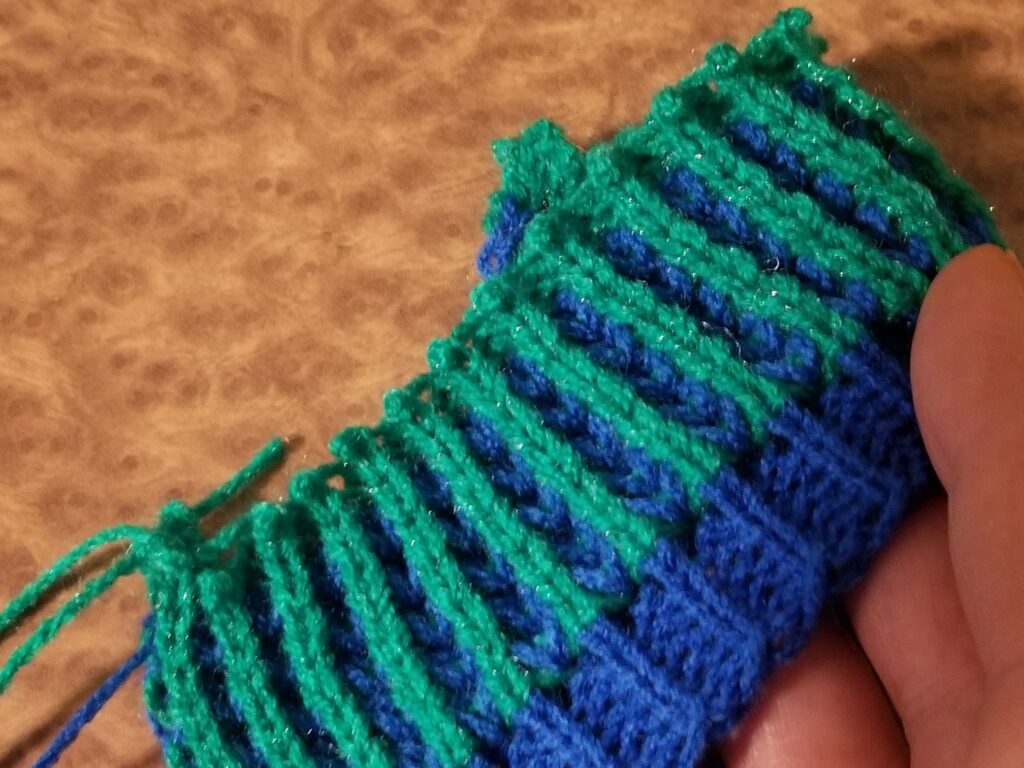

We continue along to our desired length – changing yarn and settings every time the carriages are on the left. The result is ribs in one color and purls in the other and the reverse on the other side.
I have a tutorial up on YouTube as well, if you find it helpful please subscribe while you’re there.

